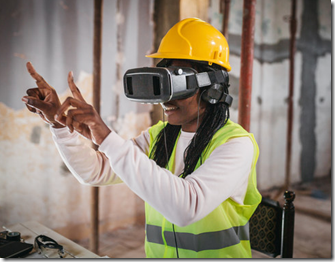Originally posted on January 3, 2022 @ 10:42 AM
Why Safety Doesn’t See Things
 One of the beauties of fallibility, frailty and mortality is understanding why and how we perceive things.
One of the beauties of fallibility, frailty and mortality is understanding why and how we perceive things.
The human eye is nothing like a camera, just as the brain is nothing like a computer. Both metaphors of camera and computer are not just unhelpful but create a mythology that allows Safety to blame people for any form of blindness. All vision is filtered by a range of complexities that are both the strength and weakness of the human Mind. Mind is best understood as ‘embodied being’.
When we talk about ‘seeing’ we include all forms of perception by all senses as well as the Mind’s eye (Bronowski – The Visionary Eye https://archive.org/details/visionaryeyeessa00bron ). Having a dream, experience or an epiphany is just as much a way of ‘seeing’ as any form of physical perception. Accessing the imagination is just as important for vision as a retina. All risk assessment is an act of imagination. This is why we express understanding to someone by saying, ‘oh yes, I see’. We use the metaphor of vision to explain cognition.
In my 9th book in the series on risk called Envisioning Risk (https://www.humandymensions.com/product/envisioning-risk-seeing-vision-and-meaning-in-risk/ ) I spend several chapters explaining the mechanics of the eye and brain. What we learn is that a perceived weakness of vision and cognitive blindness is an illusion. The mechanics of how our eyes (and all senses) and brain integrate as embodied experience creates our Mind (embodied perception/knowing of the world). Being human and thinking, is much more than the crunching of data in a brain-as-computer received by an eye as camera.
Vision doesn’t start with the eye, that’s how the book starts. Unless we extend our definition of vision to a holistic understanding we won’t ‘envision’ much. However, if we understand the world as a ‘semiosphere’, we begin to ‘see’ the importance of all the visual ecology that makes up our world.
When you ‘see’ this industry of safety grappling with the mechanics of seeing, trapped in its behaviourist cocoon, you ‘see’ just how much behaviourism constrains the ability to ‘see’. When you’ve been indoctrinated in traditional safety, how could you know you are blind? When you’ve been fed behaviourism as truth, how could you see it as a delusion? How many songs and poems tell us that love ‘looks’ with the heart? How does that fit in with this narrow behaviourist idea that ‘what gets measured gets managed’. And tell me, how do you ‘manage’ love?
Illusions for 2021 was recently released (https://www.youtube.com/watch?v=8lGLyOKhZqc) and is a montage of presentations that are unreal but are real (with no camera tricks or edits). Watch it below.
At the end of chapter two in my book I discuss three magicians I have known. All three have made a living off understanding how our Mind (not brain) believes things. The same goes for conspiracy theories. Try and convince a conspiracy theorist that their perception is wrong, good luck.
People don’t come to belief through what they physically see, neither are they converted out of belief by rational argument. How a person can believe in human fallibility and zero is a testament to the non-rationality of the human Mind. Belief is not about rational or irrational function but rather a-rational function. The framing of perception through the lens of rationality is also unhelpful (https://irrationallabs.com/ ). Any act of faith is not rational because it enacts belief without evidence. This is why the zero cult calls for belief in zero against evidence to the contrary.
This is why any criticism of zero is perceived as an ‘attack’. Similarly, any criticism of safety. Nothing makes one more blind than a good dose of safety engineering.
Unless there is a shift in this worldview very little will change and so the industry defends its own blindness in the hope (also an act of Faith) it will somehow envision something new by repeating more of the same.



Do you have any thoughts? Please share them below